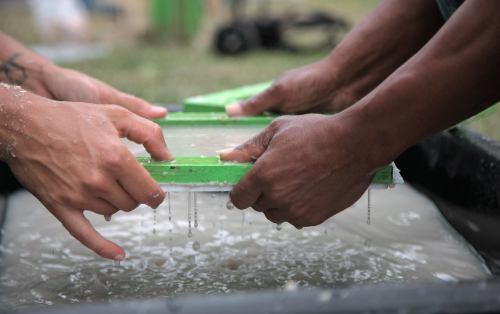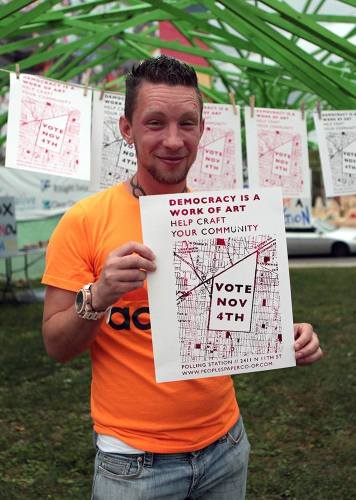You are currently browsing the tag archive for the ‘Philadelphia’ tag.

The fight against mass incarceration takes many forms: from protesting outside prisons, to blocking jail construction, to journalism that reaches inside, to hearing prisoners’ voices, to making oneself aware of gross abuses, to viewing the most gruesome pictures, to letter writing, to education and more. Sometimes the fight requires coming together and “hacking” the system by sucking up costs collectively and *joyously* paying bail.
The Philadelphia Community Bail Fund is celebrating creativity, raising consciousness, and tackling unjust bail policies by paying them. The group is identifying poor people who needlessly languish in jail while they await trial. In the past three weeks, and at the time of writing, Philadelphia Bail Out has raised $98,000. A stunning effort.
No doubt, this short term *solution* also raises a longer term debate about the unfairness about cash bail and can potentially drive future positive change. Thousands of people have donated art, time, skills, money: small contributions that have amassed to a large reserve of cash to bring mothers home for Mother’s Day.
In order to secure release before Sunday 12th, Philadelphia Community Bail Fund has marked today as the last day to ensure your money goes to the release of women on the first round of bail outs on Thursday. Keep donating though and more bail outs will occur through next week.
FREE OUR MOTHERS POSTERS
Among the dozens of community-group-partners, I want to give a shout out the the People’s Paper Co-op, a women led, women focused, women powered art and advocacy project that promotes women in reentry as the leading criminal justice experts. PPC “uses art to amplify their stories, dreams, and visions for a more just and free world.”
People’s Paper Co-op has partnered with Philadelphia Community Bail Fund to create limited edition poster prints for you to buy and all the money goes to getting cis and trans women out of Philly jails. The posters are made of shredded and pulped criminal records that have been expunged.
Artists include Etta Cetera, Kate DeCiccio, Micah Bazant, Molly Crabapple, Molly Fair, Nile Livingston, Rose Jaffe, Shoshana Gordon and Sanya Hyland.
“We need each other,” says Hyland. “We need community, in order to make the fundamental transformations necessary in our society. The women behind “Mama’s Day Bail Out” have organized something powerful and transformative, showing we do ‘have the power to transform our world’, but ‘we can’t do it alone’.”
Go buy art, or simply donate, get mums out of jail and support true community organizing.



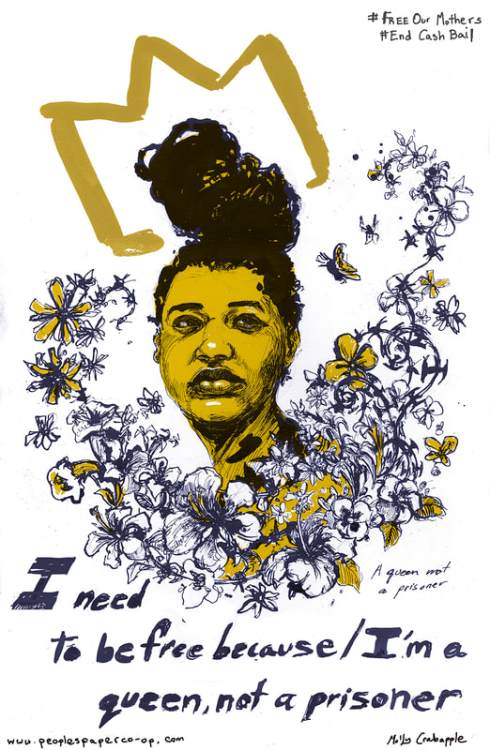




DOUBLE METAPHOR
“Being in the prison system is like you go into a maze and never come out,” said an incarcerated to man to artist Sam Durant in the months preceding Open Source, a city wide public art project in Philadelphia.
Durant has erected Labyrinth, a 40x40ft maze of chain-link fence, in Thomas Paine Plaza, across the street from City Hall. The public have been hanging personal responses on the maze fence using it as a stage to consider mass incarceration. Durant intended that the structure which begins as transparent will gradually become opaque with the publics additions.
Philadelphia is a sadly fitting venue. The prison industrial complex has had a particularly acute effect on Philly communities and Pennsylvania as a whole. PA has one of the largest and strictest prison systems. Philadelphia has a jail system with a history of beatings, discrimination and scandal.
It would be folly to think that politicians are going to correct the problems of a bloated, abusive system without the help of the citizenry.
“The maze functions as a double metaphor, symbolizing not only the struggle of criminals caught in the Department of Corrections but for how, as a society, we are all navigating the labyrinth of mass incarceration,” says the Open Source website.
During his recent visit, the Pope didn’t take the opportunity to publicly shame City Hall and those who work within, but Durant’s sculpture obliquely does.
I like this art.


Sam Durant
Sam Durant is a multimedia artist whose works engage a variety of social, political, and cultural issues. Often referencing American history, his work explores the varying relationships between culture and politics, engaging subjects as diverse as the civil rights movement, southern rock music, and modernism. He has had solo museum exhibitions at the Museum of Contemporary Art, Los Angeles; Kunstverein für die Rheinlande und Westfalen, Dusseldorf, Germany; S.M.A.K., Ghent, Belgium; and the Govett-Brewster Art Gallery, New Zealand. Durant shows with several galleries, including Blum and Poe, Los Angeles; Paula Cooper Gallery, New York City; Praz-Delavallade, Paris; and Sadie Coles Gallery, London. His work can be found in many public collections, such as the Art Gallery of Western Australia, Perth; Tate Modern, London; Project Row Houses, Houston; and the Museum of Modern Art, New York. Durant teaches art at the California Institute of the Arts in Valencia.
CREDIT
Photos by Steve Weinik.

The high priest of street art just dropped half-a-dozen posters for use by your good selves against the prison industrial complex. #abolishprisons.
Made as part of the Philadelphia Mural Arts-organized Open Source project, they are classic Fairey, but the are free. And they are weapons in the fight.
“Open Source is a month-long, citywide celebration of innovation,” says Mural Arts. “Curated by Pedro Alonzo, the 14 projects of Open Source reveal aspects of Philadelphia’s urban identity. Open Source encourages artists to engage in community-centered explorations, addressing a variety of topics, including immigration, recycling, mass incarceration, the environment, community reinvestment, and displacement.”
The 14 artists at large in Philly are the Dufala Brothers, Sam Durant, Shepard Fairey, JR, Ernel Martinez & Keir Johnston, MOMO, Jonathan Monk, Odili Donald Odita, Michelle Angela Ortiz, Sterling Ruby, Jennie Shanker, Shinique Smith, Swoon and Heeseop Yoon.
Did I mention OBEY Fairey’s works were FREE? Download a PDF of the graphics here.
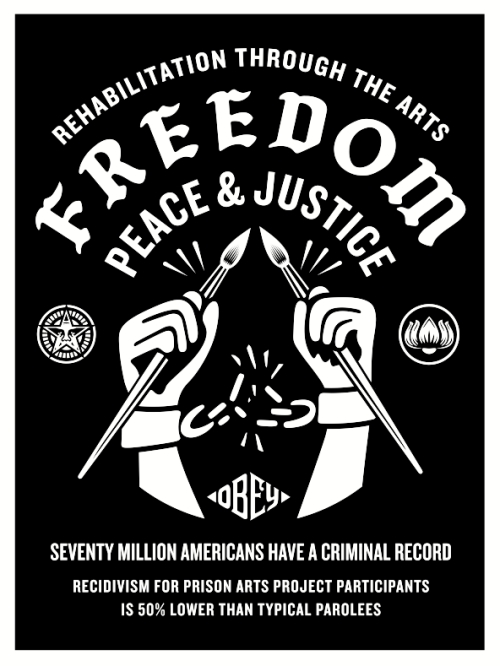
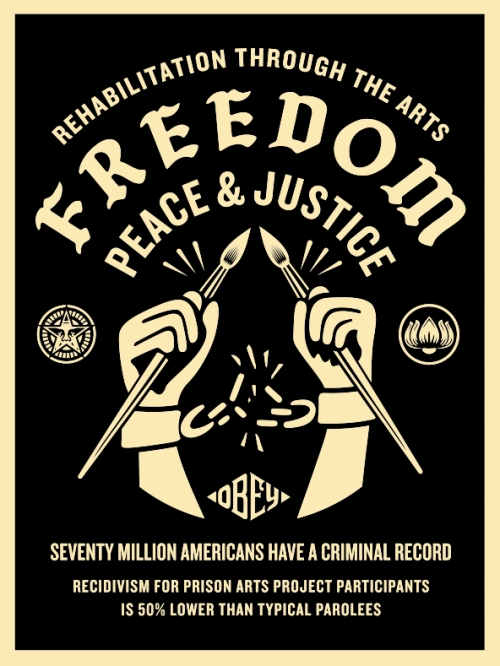



G-LAW
Fight Hate With Love, a documentary film about Philadelphia-based artists and activist Michael Tabon (a.k.a. G-Law a.k.a. OG-Law) has been shortlisted for the Tim Hetherington Trust‘s inaugural Visionary Award.
The film made by Andrew Michael Ellis, director of photography at Mediastorm is about “one man’s journey to change the world and still be the guide his family needs him to be.”
The film looks inspiring, but as with any narrative arc, the protagonist faces challenges. It seems the stresses of Tabon’s art and activism upon his family is the emotive hook, Ellis is molding.
I met Tabon and his wife Gwen this time last year as he was embarking on his third self-imposed lock up in a self-built cell on the cold February streets of Philly. They did not display the tension as they do in Ellis’ trailer. Tabon was putting his un-prison cell together and Gwen was helping with supplies, PR, food & drink, and vocal support. It was clear they rely on one another to make work and to meet the silent, unending need for Tabon’s love-filled message.
Tabon’s manipulation of visual tropes is cunning and effective. He has reclaimed the cell, the orange jumpsuit and the shackles. He has jogged 10 miles a day for seven days around Philadelphia with a 40-foot banner reading FIGHT HATE WITH LOVE. He has walked with a ball-and-chain from Selma to Montgomery.
“Tabon has been caught in the revolving door of the prison system since he was sixteen years old. Incarceration became a way of life, seen as an inherited destiny for America’s young Black poor, until he had a revelation – that he could break the cycle of the womb-to-prison pipeline gripping marginalized communities across the country,” says Mediastorm.
It’s wonderful to see Tabon on the Mediastorm platform and Hetherington Trust’s radar. His unorthodox but unmissable approach to social change needs to go national.
Youtube trailer here. Follow Tabon on Twitter and on the web.
























